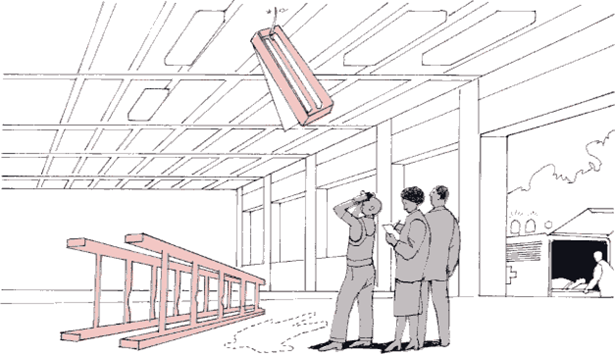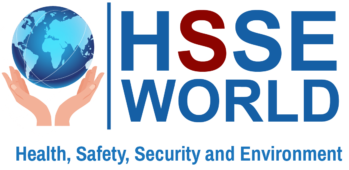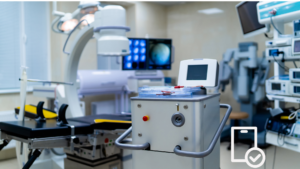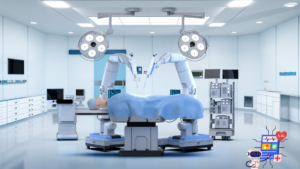Keeping Your Employees Safe: A Guide to Workplace First Aid
10 min readFirst aid equipment and materials should be readily available for treating industrial injuries or sickness at all workplaces. Such equipment includes a first aid kit and a stretcher with blankets. A person with first aid training should always be on the premises.

In the event of an accident, you should act in the following way:
- prevent more people from being injured
- call the instructor or supervisor, or the person responsible for first aid treatment. Call an ambulance if necessary.
- aid the injured person.
In the case of a serious accident, you should observe the following procedures in giving first aid to an injured person:
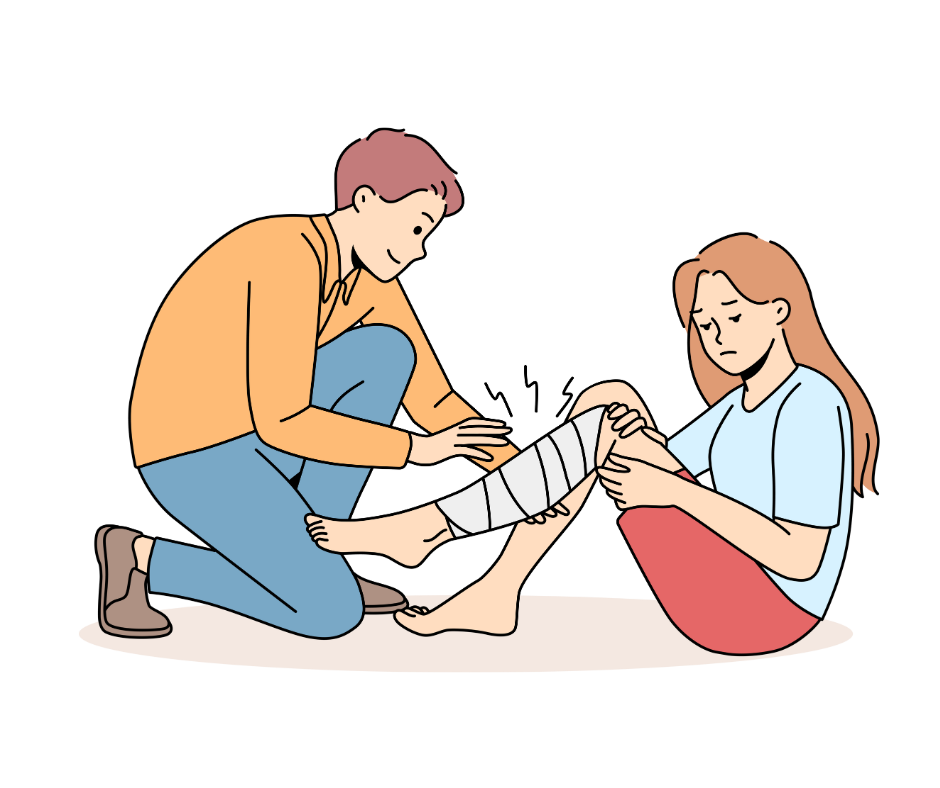

1. Check breathing
Check quickly that air is passing in and out through the nose or mouth of the injured person. If a person is unconscious and lying on his back, he can suffocate because the tongue can slip back into the throat and block the respiratory tract.
An unconscious person should therefore be placed immediately on his side, face down. Care must be taken if there is any possibility of a neck injury.
2. Respiratory failure – artificial respiration
If the person has simply collapsed, support the back of the neck with one hand, and place the other hand on the forehead. Bend the injured person’s head as far back as you can. Pinch his (her) nose and start blowing air in through his (her) mouth.
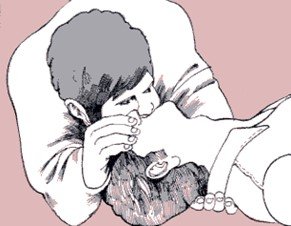

3. Stemming heavy bleeding
If the injured person is bleeding, try to stop the bleeding by using direct pressure on the wound and by placing the injured limb in a raised position. In most cases this is all that is required to stem the flow of blood.
The injured person should lie with his/her feet up, except in cases of head or chest injury or difficulty in breathing.
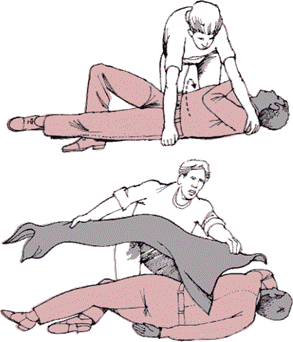

4. Preventing shock
In the case of serious accidents, e.g. deep wounds accompanied by heavy loss of blood, bad jamming accidents, injuries to the chest or stomach leading to internal bleeding and severe burns, etc., there is always a high risk that the injury will lead to shock. Severe accident shock can be fatal. But it can also be prevented! Examples of measures to prevent shock:
- free respiration: always place an unconscious person on his/her side in a slightly forward leaning position. Care should be taken to protect an injured neck.
- stop bleeding: direct pressure on the wound with the injured limb raised.
- rest: the injured person should lie with the feet and legs raised above the level of the head. Warmth helps, so cover him with a blanket. It is important to maintain body temperature.
5. Wounds, cuts, abrasions
The most common injury resulting from an accident is a cut or abrasion. If cuts and abrasions are superficial, first stem the bleeding then clean them carefully and thoroughly with soap and water. After cleaning, cover them with a bandage.
The person applying first aid should be particularly careful about first washing his/her hands. You should never stick your fingers into an open wound and never touch that part of the bandage which will be lying directly on top of the wound.
Serious cuts and wounds should always be treated by a doctor. In such cases first aid help is restricted to the application of a dressing and bandage. Abrasions may appear relatively light and insignificant, however, it is often more of an infection risk than an open wound.
All deeper cuts and abrasions which are the result of accidents occurring while working outside should be treated by a doctor to avoid tetanus (lock-jaw).
If an old wound or sore shows signs of being infected (swelling, discolouring or pain), it should be treated by competent medical personnel.
6. Burns
If a person’s clothing has caught fire, the best way of quenching the flame is to roll the person on the floor or in a blanket. After extinguishing the flames make sure the person is breathing, cool the burn with water, cover the burn, and make sure that the victim gets to a hospital as quickly as possible.
Do not, under any circumstances, try to remove the victim’s clothes. If the area of the burn is larger than the palm of your hand, or the victim has facial burns, you can place a protective bandage over the injury. The victim must be taken to a hospital or doctor as quickly as possible after such preliminary measures.
In the case of more serious burns, it is very likely that the victim will suffer from shock. You should always be prepared to take the necessary measures to prevent severe shock.
If in the case of a burn smaller than the size of your palm, start treating the injury by cooling the burn. You can start immediately by rinsing the burn under running water. Or use the distilled water in the first aid box.
Never use flour, butter, cream, alcohol, iodine or such like substances on a burn! Never pierce a blister on a burn. ( First Aid For burns)
7. Injuries from working with corrosives
If anyone spills acid or alkali on the skin, you should rinse it off as quickly as possible with water unless otherwise indicated.
The injuries should then be treated in the same way as burns. Injuries from corrosive liquids are often much worse than they appear. For this reason the injuries, no matter how insignificant they may appear, should be treated by a doctor.
E-Books: PPE for Chemical, Biological, and Radiological Hazards free
8. Eye injuries first aid
The greatest possible care should be taken in the case of injuries to the eye or the area surrounding it.
“Dirt in the eye” is one of the most common eye complaints. If you get a mote in your eye, and it is near the surface, you can rinse it out or very carefully wipe it away with a damp swab of cotton or the corner of a clean handkerchief.
Alkali or acid in the eye can cause intense pain. Because of the risk of the corrosives attacking the eye you should always rinse the eye immediately with water for at least 10 minutes. After rinsing you should have a doctor look at the injury.
If the eye is exposed to the briliant light from an electric arc, in welding work for example, it can become inflamed and irritated. The best thing to do in such a case is to get in touch with a doctor as soon as possible.
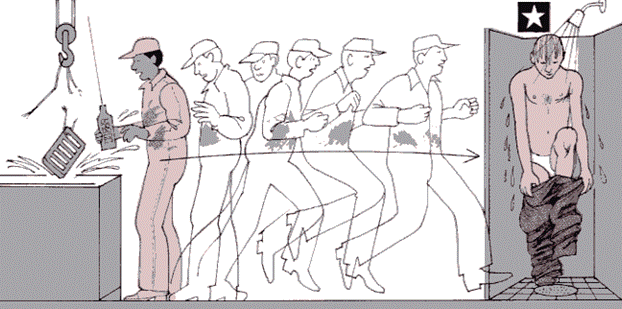

Prevent the abovementioned risks by enclosing the work process. Use personal safety equipment such as visors, gloves and aprons.
Read chemical-protective-clothing-selection-guide
9. Injuries from electricity
Electric shocks affects the heart and can rapidly be fatal. Additional injuries could occur if the victim, when shocked, should fall from a scaffolding, ladder or any elevated place.
If the injured person is still touching an electric device, the current should be cut off immediately by switching it off at the source. If the current cannot be cut off, use something that is long, dry, clean, and non-conductive to move the person away from the source or the source away from the person.
Once the injured person has been pulled away from the live current, cardiopulmonary resuscitation should be applied if needed. Don’t waste time moving the injured person to a sick bay or another spot.
As a rule, do not treat any electrical burn.
10. Broken limbs, sprains, dislocations first aid
In cases where a fractured limb is suspected, the injured person should have his limb immobilised to prevent the break from getting worse and to alleviate the pain. Use a splint, a couple of sticks or even a rolled up newspaper, place the support on the outside of the clothing and secure it with a bandage. The splint or support should be long enough to cover the joints above and below the break in the bone. To avoid unnecessary pressure on the break, wadding can be inserted between the splint and the limb.
When there is an open wound on the broken limb, use a dressing to cover the wound before applying the splint.
Read: limb-body-protection-chainsaws
11. Injuries to the skull and spine first aid
Blows to the skull can lead to unconsciousness (concussion) and spine injury.
If the person is breathing and conscious, do not allow him to move unless he needs to more to clear his air passages. In that case, taking care not to injure the spine, place him slightly on his/her side with the face down. In this position you can prevent blood running into the respiratory tract from any wounds in the mouth or throat. Never put wads in the nose of the injured person to prevent bleeding. When blood is running out of the ears, do not try to rinse it away. If an injured person has lost consciousness and is lying with his/her jaws locked tightly together, do not try to force them open.
Never try to give an unconscious person something to drink; it can run into the respiratory tract and lungs and cause suffocation. When you suspect a break in the spine or pelvis, the injured person should only be moved by trained personnel.


12. Injuries to the stomach
If an injury to the stomach is caused by a blow, being run over, or something falling on the person, etc., he or she should be taken to a hospital immediately.
Do not give the injured person anything to eat or drink.
Open wounds should be covered with a clean, wet bandage. Care must be taken in transporting the injured person to the hospital.
13. Lifting a person
When the injured person has to be carried to a safe place while waiting for an ambulance, the most comfortable way of lifting him (her) is by using a stretcher or a big blanket.
In order to rescue an injured person quickly from an exposed place, in the case of danger from fire, a good method is by dragging the person by the clothes.
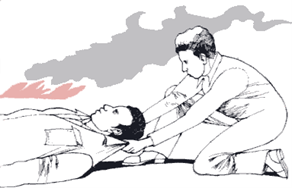

Investigation
Summon immediately:
- someone with medical knowledge
- an ambulance or other vehicle to take the injured person to a hospital or a doctor if required.
- inform the management and the union safety representative
- to determine the injury’s extent.
Cordon off the site of the accident and do not touch anything until the accident investigation has been completed.
Once the immediate steps described above have been taken, the accident should be investigated as quickly as possible, to establish the cause, not to lay blame.
The following points should be covered by such an investigation:
- a report on how the injury occurred (this should be obtained from the injured person, the co-worker or the supervisor)
- a list of the names of the people who witnessed the accident
- objects, materials etc. that were involved in or related to the accidents should be left untouched
- a simple drawing or a photograph of the site of the accident.
